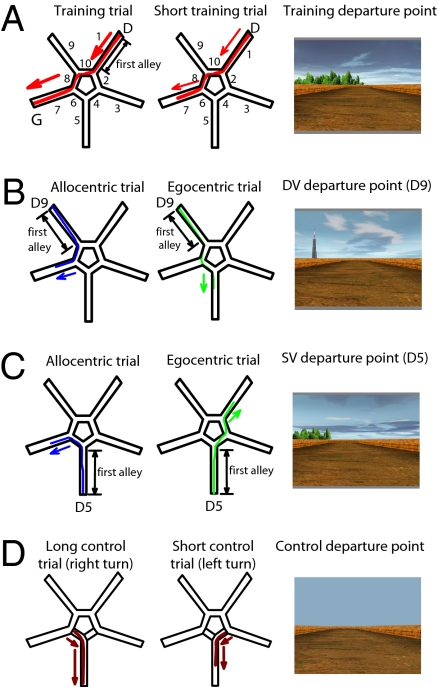Fig. 1.
Trial-types performed in the “Starmaze,” a virtual maze comprising a central pentagonal ring (alleys 2, 4, 6, 8, and 10), five radiating alleys (alleys 1, 3, 5, 7, and 9), and surrounding environmental cues. (A) Training trials: Participants start in alley 1 (see initial view, Right) and must navigate to the goal at the end of alley 7, which triggers fireworks (Left; arrow shows ideal path). Participants can use allocentric or sequential egocentric representations to solve the task. Twenty-five percent of training trials finish in the middle of alley 7, without fireworks (Center). (B and C) Probe trials use a different departure point to identify which type of representation is being used to solve the task. Half of the probe trials depart from alley 9, which has a very different view to alley 1 (B, departure point “DV”), half from alley 5, which has a more similar view to alley 1 (C, departure point “SV”). Participants using an allocentric representation including the distal environmental cues will go to alley 7 (paths shown in blue). Participants using a sequential egocentric representation of body-movements (right-left-right) will take the paths shown in green. The main fMRI analyses concern activation in the first alley. Probe trials always end in the middle of the goal alley, without fireworks. (D) Control trials: Control trials are composed of one single turn (to the right or to the left). No external landmarks are present in the environment. Half of the control trials end in the middle of the goal alley, without fireworks.

